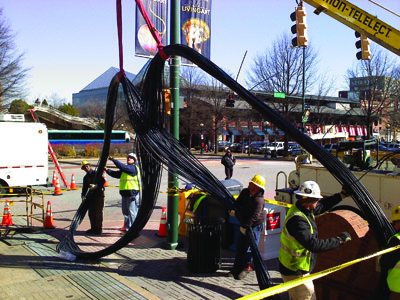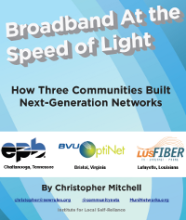The Economics of the Google Gigabit
In the excitement around Google's unveiling of the $70 gigabit broadband connection in Kansas City, some may be wondering how it is that Google can offer a gigabit for moderately more than what most of us pay for far slower cable broadband connections.
On one side of the equation is the fact that big cable companies (Time Warner Cable, Comcast, etc.) have long been ripping off consumers by pricing their services far above cost -- something they can easily do because they face so little competition. But the more interesting side of the equation is how Google can make its gigabit price so low.
Recall that Chattanooga made major waves with its gigabit service, priced then at the rock-bottom rate of $350/month. A gigabit is not available in many communities and where it is available, the price is often over $10,000 per month. We published an in-depth case study of their approach a few months ago.
But, as Milo Medin -- the head of the Google Fiber project -- is fond of saying, "No one moves bits cheaper than Google." Google has built an incredible worldwide fiber optic network. Let's call this lessons 1 and 2.
 Others have already followed these lessons but are not able to offer their gig for such a low prices. To understand why, let's start with some basics. I'm hypothetically starting Anytown Fiber Net in my neighborhood and I want to offer a gig.
Others have already followed these lessons but are not able to offer their gig for such a low prices. To understand why, let's start with some basics. I'm hypothetically starting Anytown Fiber Net in my neighborhood and I want to offer a gig.
Lesson 1: Google built its own network. It isn't leasing connections or services from big telecommunications companies. Building your own network gives you more control -- both of technology and pricing. Lesson 2: Google uses fiber-optics. These connections are reliable and have the highest capacity of any communications medium. The homes in Kansas City are connected via fiber whereas Time Warner Cable, CenturyLink, and others continue to rely on last-generation technologies because they are delaying investment in modern technology to boost their profits.
 Others have already followed these lessons but are not able to offer their gig for such a low prices. To understand why, let's start with some basics. I'm hypothetically starting Anytown Fiber Net in my neighborhood and I want to offer a gig.
Others have already followed these lessons but are not able to offer their gig for such a low prices. To understand why, let's start with some basics. I'm hypothetically starting Anytown Fiber Net in my neighborhood and I want to offer a gig.


